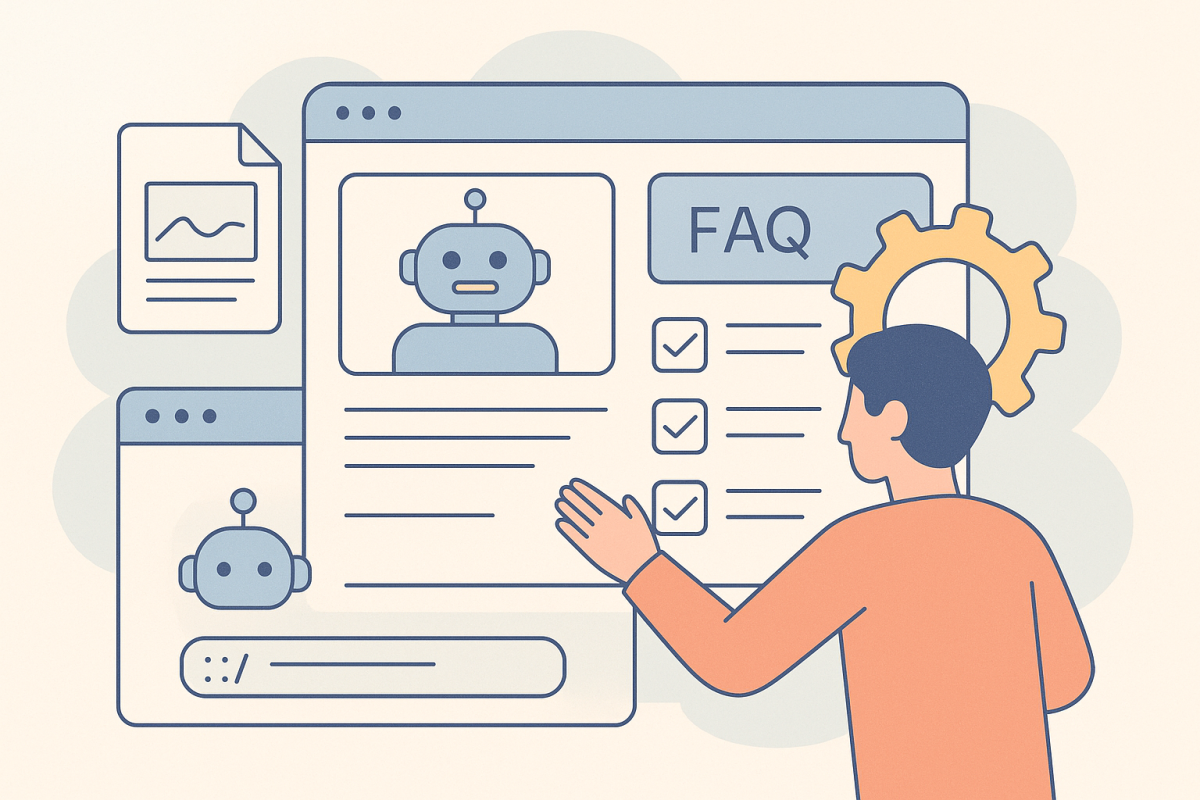While traditional search isn’t dead, AI-powered search is taking over fast. ChatGPT processes 2.5 billion queries daily, and Google’s AI Overviews now appear in over 13% of all searches. If your content isn’t optimized for AI, you’re invisible to millions of potential customers.
Where to Start When You’re Overwhelmed
Maybe you’ve read our complete guide to GEO and AEO optimization or another comprehensive resource on AI search optimization. If so, you know there’s a lot to tackle, schema markup, entity optimization, multimodal content, platform-specific strategies, and dozens of other tactics.
It’s easy to feel paralyzed by all the possibilities.
Here’s the truth: You don’t need to do everything at once. This article isn’t a comprehensive strategy, it’s a practical starting point for optimizing your website for AI. These three simple, high-impact steps will get you 80% of the results with 20% of the effort. You can implement them today, even if you’re not technical, and start seeing improvements in how AI systems find and cite your content.
Step 1: Give AI Bots Permission to Read Your Site
Why it matters: If AI crawlers can’t access your content, you’re completely invisible in AI search results no matter how good your content is.
What to do:
- Open your website’s
robots.txtfile (usually at yoursite.com/robots.txt) - Make sure these AI bots are allowed:
- GPTBot (ChatGPT)
- Google-Extended (Google’s AI)
- ClaudeBot (Claude)
- CCBot (Common Crawl)
- PerplexityBot (Perplexity AI)
- Bingbot (Microsoft Copilot)
How to implement it: If you see any of these bots listed under “Disallow” or blocked, remove those restrictions. Your robots.txt should either not mention them at all (which allows them by default) or explicitly allow them with “Allow: /”.
Time required: 5-10 minutes
This is the foundation. Without access, nothing else matters. If you aren’t comfortable with this have your website developer or agency take care of this.
Step 2: Add Statistics and Cite Your Sources
Why it matters: Princeton University research proved that adding statistics improved AI visibility by 25.9 points, which isone of the highest-impact tactics identified in academic studies so far. AI systems prioritize content with quantifiable evidence because it helps them validate accuracy.
What to do:
- Add 3-5 relevant statistics or data points per 1,000 words of content
- Link to authoritative sources (academic papers, government data, industry reports)
- Include numbers that support your key claims
Example transformation:
Before: “Email marketing is very effective for small businesses.”
After: “Email marketing delivers a 4,200% return on investment for small businesses, generating $42 for every dollar spent, according to Litmus research. This makes it one of the most cost-effective digital marketing channels available.”
Time required: 15-30 minutes per article
This simple addition signals credibility to AI systems and makes your content more likely to be cited in AI responses.
Step 3: Create FAQ Sections with Proper Formatting
Why it matters: FAQ sections align perfectly with how AI systems generate responses. When someone asks ChatGPT or Google AI a question, these systems look for clear, direct answers which is what FAQ sections provide.
What to do:
- Add a FAQ section to your most important pages
- Format questions the way people actually ask them (conversational, natural language)
- Start each answer with a direct, concise response (40-60 words)
- Follow with more detailed information if needed
Example structure:
Q: How long does it take to see results from SEO?
A: Most websites see noticeable SEO results within 4-6 months, though competitive industries may take 6-12 months. Quick wins like fixing technical errors can show improvements in weeks, while building authority through content and backlinks requires sustained effort over several months.
Bonus points: If you can add FAQ schema markup (structured data) to your FAQ sections, AI systems can understand and extract your answers even more easily. This is more technical but worth exploring with your developer.
Time required: 30-60 minutes per page
Why These Three Steps Work
These tactics aren’t random guesses, they are backed by research and validated by industry data.
Start Simple, Scale Up
Don’t feel overwhelmed trying to optimize your entire website at once. Start with your 5-10 most important pages, the ones that drive the most traffic or conversions. Implement these three steps there first, then expand to other pages as you have time.
Remember: most companies haven’t optimized for AI search yet. By taking action now, you are gaining a competitive advantage while the window is still wide open.
What’s Next?
These three steps provide the foundation for AI visibility, but they’re just the beginning. Our full guide covers advanced tactics like entity optimization, multimodal content, platform-specific strategies, and comprehensive implementation roadmaps if you’re ready to go deeper.
The search landscape has fundamentally changed. AI-powered search represents the biggest shift in content discovery since Google revolutionized search engines 27 years ago. The question isn’t whether to adapt, it’s whether you will adapt now or play catch-up later.
Take 30 minutes today to implement Step 1. That’s all it takes to make your content visible to billions of AI-powered searches.
Sources & References
Statistics cited in this article:
- ChatGPT query volume (2.5 billion daily): TechCrunch Report, July 2025 – Confirmed by OpenAI spokesperson
- Google AI Overviews prevalence (13.14%): Semrush AI Overviews Study, March 2025 – Analysis of US desktop queries
- Statistics addition effectiveness (25.9 improvement score): Princeton University GEO Research Study – Comprehensive analysis of 10,000 queries validating GEO methods
This article references and summarizes key findings from MantyWeb’s Complete Guide to GEO and AEO Optimization.


